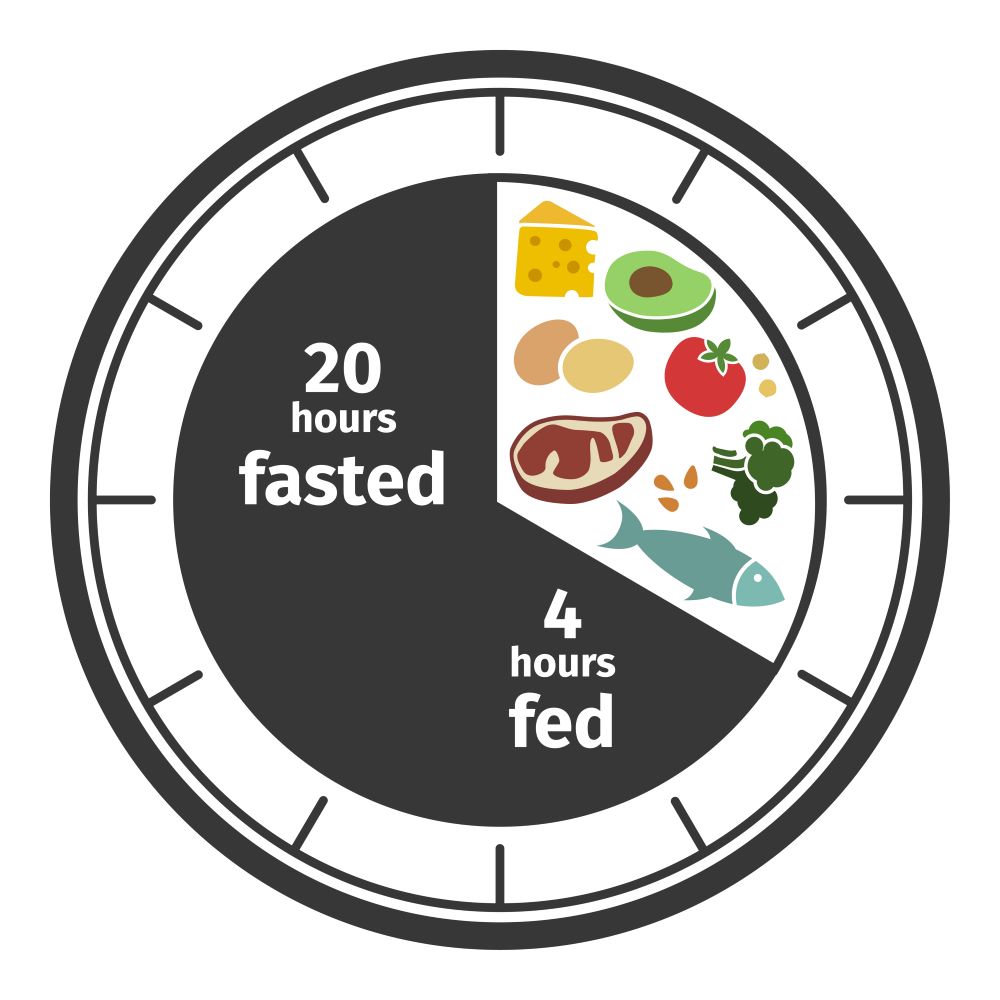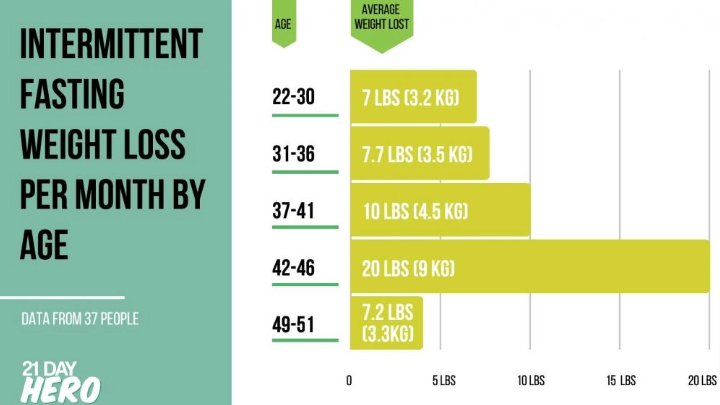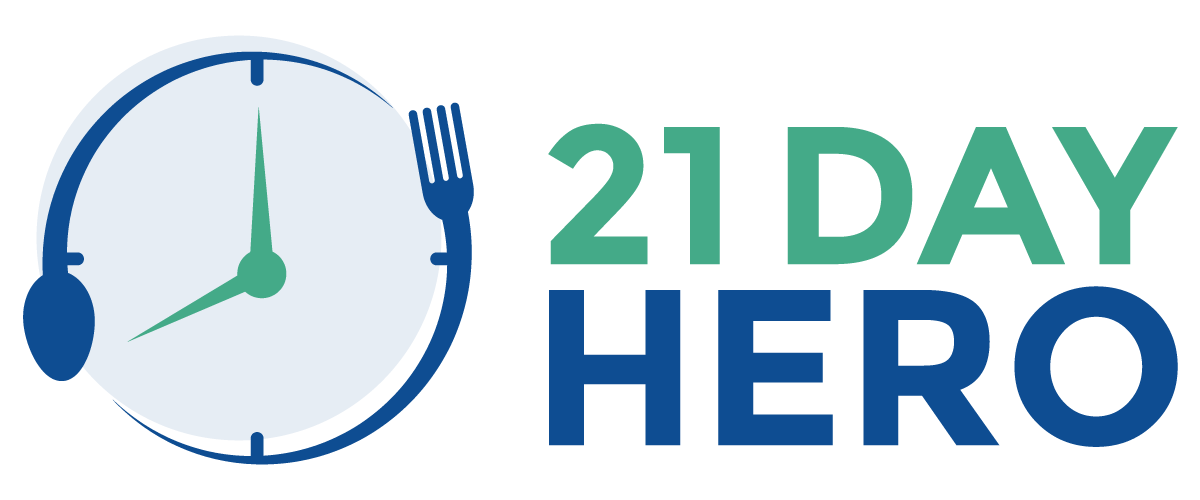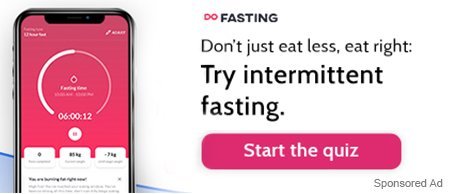What is a 20/4 Warrior Diet | Intermittent fasting 20/4 | Intermittent Fasting 20 Hours | Phase 1 | Phase 2 | Phase 3 | Potential Downsides
Are you tired of trying low-calorie, low-fat diets that are taking away all your favorite foods? If you want the freedom of eating your favorite high-calorie foods without feeling guilty or gaining weight, then the Intermittent fasting 20/4 aka-warrior diet might be the right fit for you. In this, you follow an extended fasting routine followed by a short eating window.
We all have the basic instinct of when to eat, what to eat, and when to stop eating. But when you follow a particular diet routine, you will have limitations on your food choices. Warrior diet is all about the sense of freedom to eat everything you wish to, which will enrich your life in various ways.
What is Intermittent fasting 20/4 or the Warrior Diet?
As the title suggests, the 20/4 Intermittent fasting warrior diet is an intermittent fasting method based on the eating pattern of our ancient warriors. They used to eat really less during the day and feast at night. You will eat most of your calories in your eating window of 4 hours in the warrior diet. You want to Intermittent fast for 20 hours, restricting your eating. It is believed that the warrior diet helps to burn fat and lose weight.
Ori Hofmekler introduced the concept of the 20 4 Warrior Diet in 2001, which challenges the common ideas of dietary recommendations and provides a real alternative. It is a type of intermittent fasting that involves an extended fasting period and a short window for feasting.

However, some experts believe that it is an extreme type of fasting that may not be suitable for everyone and may not work. Let us understand more about the warrior diet and if you should try it?
FYI – this diet is also referred to as 4/20, 20:4, 20 to 4, etc. Intermittent Fasting for 20 hours can have a huge benefit, so let’s dive in!
According to a research study, our meal frequency plays a significant role in increasing BMI and obesity. The study results revealed that eating less frequently can prevent weight gain. However, there is no strong evidence to support the warrior diet. Ori Hofmekler has recommended this diet based on his own beliefs and lifestyle during his military time. However, it is a 20/4 type of intermittent fasting, and you can get all the benefits of intermittent fasting through this diet.
Does the 20/4 Warrior Diet Work?
There is no evidence that directly supports the benefits of the warrior diet. However, it is a type of intermittent fasting that helps in weight management, improves insulin sensitivity, insulin resistance and overall health. A study conducted on a diet that mimics the warrior diet revealed that reduced meal frequency in the long term could result in a 20 to 30% reduction in calorie intake. It improves cardiac health, lowers oxidative stress and damage, and delays age-related changes in the body.
Another study demonstrated that fasting for an extended period could reduce inflammation. Reduced meal frequency has a profound positive impact on your overall health.
With all the available evidence, we can say the warrior diet is prolonged intermittent fasting, which is effective in achieving weight loss.
Read – A Complete Guide To Intermittent Fasting to know more about intermittent fasting.
Want to know what results you can expect? Let’s show you some results by clicking HERE.

Benefits of 20/4 intermittent fasting – 20 hour intermittent fasting
- Reduced Risk of Heart Disease
- Fat loss – lose weight
- Improved insulin response
- Reduced Blood Pressure
- Increase Energy Levels
- Anti-Aging
In the warrior diet, you will restrict your calorie intake for 20 hours and eat as much as desired during your eating window. When you start any new habit, it is believed that it takes approximately 21 days to adapt; the same goes with the warrior diet. There is a three-phase strategy that is divided into the initial three weeks to allow your body to adapt.
Warrior diet follows a simple principle, you restrict your eating during the day and consume your calories in the evening meal during your eating window. In your fasting period, you don’t need to starve; you are allowed to eat certain foods.

Phase 1. Week 1: Detox
In the first week of your diet, eat less until your evening meal. Calorie content will depend on your body weight and BMI.
During the day you can eat;
- Small portions of vegetables and fruits
- Small servings of dairy like plain yogurt
- Hard-boiled eggs
- Vegetable broth
- Water, coffee, tea, and a small amount of milk
In your eating window, you can have your complete meal that can include;
- Cooked vegetables
- High protein food like chicken, meat, fish, etc.
- Dairy products like milk, cheese, yogurt
- Grains like barley, rice, quinoa (no wheat)
- Fats like nuts, olive oil
Phase 2. Week 2: High-Fat Diet
In this phase, you are encouraged to eat high-fat foods. It allows the same food as week one during the day. Be sure to use healthy fats on this intermittent fasting plan.
In your eating 4-hour window include;
- Salad with oil and vinegar
- Lean meat
- Cooked vegetables
- A handful of nuts

High-fat foods like nuts and seeds can regulate your hunger hormones hence should be included in your meal plan. Avoid eating starch, grains, or sugary food in this phase.
Phase 3. Week 3: Alternate High-Carb, High-Protein Diet
In the third week, you will alternate between a high-carb and high-protein diet. One or two days, you will consume high-carb foods followed by a high-protein diet for the next two days.
During your high-carb days, your fasting window follows the same diet as mentioned in the earlier phases. In your eating period, you can eat high-carb foods like;
- Potato
- Corn
- Peas
- Pumpkin
- Barley
- Rice
- Oats
- Pasta
- Bread

On a high-protein diet, you will follow the same fasting routine. In your eating period, you can add vegetables, meat, chicken, and other protein-rich foods. You should avoid consuming any carbs in this phase. This will help maintain your muscle mass.
After completing these three-week phases, you can follow a simple routine of undereating for 20 hours by having low-calorie food followed by a nutritious evening meal. You don’t have to count calories in this diet. Ori Hofmekler suggests eating one serving of a meal and taking a 20-minute break to process your hunger signals. If you still feel hungry, you can eat again. Stop eating food when you feel full.
Avoid consuming highly processed food or sugary drinks. Consumption of daily multivitamins and other supplements is recommended in this diet to avoid nutritional deficiency.
Also, while following the warrior diet, you should incorporate exercise and strength training in your routine to promote fat loss. Drink more water throughout the day to keep yourself hydrated.
You may feel tired at first but stick with it, the benefits of 20/4 are outstanding!
Improved digestion
Weight Loss
Brain fog Clears
Less fatigue over time, more energy, and MUCH more!
Need more tips on how to follow an extended fasting routine? Read – Prolonged Fasting 101: How To Do It & Are The Benefits Worth It?

20/4 Intermittent Fasting weight loss results 1 month into the program
In as little as 1 month of 20/4 intermittent fasting, there have been results in the range of 5-10 pounds! As your body adjust to the new fasting program, people tend to lose weight pretty quickly. Just be sure you are getting the right nutrients, and watching your calories and diet.
Avoid processed foods, and drink tea or water instead of sugary beverages or calorie packed drinks.
In one study, participants who followed a 20/4 fasting protocol for 12 weeks lost an average of 8.4 pounds (3.8 kg) of body weight. Another study found that obese individuals who practiced intermittent fasting for 12 weeks lost an average of 9.9 pounds (4.5 kg) of body weight. However, it is important to note that individual results may vary and that sustainable weight loss is best achieved through a combination of healthy eating habits and regular physical activity.
We wrote this article – 20/4 Weight Loss Results with Intermittent Fasting.
Potential Downsides of the 20/4 Warrior Diet
Some people may feel great when fasting for 20 hours, but some may not find it ideal. This diet restricts your eating to just four hours a day which can be hard to follow. The warrior diet may also result in various side effects for some people.
Some of the common intermittent fasting 20/4 side effects are fatigue, dizziness, anxiety, extreme hunger, insomnia, constipation, irritability, weight gain, and low blood pressure. You may also experience nutritional deficiency while following this kind of intermittent fasting.
However, if you make healthy food choices and plan your meals to meet all your nutritional requirements, you can successfully follow this diet. You shouldn’t try the warrior diet if you have any underlying medical conditions. Warrior diet is not recommended for;
- Women planning for pregnancy
- Pregnant women
- Children
- Athletes or sports person
- People having an eating disorder
- Underweight people
As the intermittent fasting 20/4 aka warrior diet recommends eating anything during a 4-hour eating period, some people may develop binge eating habits leading to weight gain. You need to stop eating when you are pleasantly full, but if not followed rightly it can negatively impact your health. Following the warrior diet for an extended period can be challenging and can result in eating disorders.
Prove It!! What results can I expect from 20/4 fasting? Here is the data….


Bottom Line
Personally, I occasionally will do the Warrior Diet to prolong my fasting period. Normally I do 16/8, but on days where I feel I need more recovery, or after a weekend of eating not so great, lol, I will try to extend my fasting, and the autophagy and digestive recovery I will get from a 20/4 fast or even 48 hour fast. But do what you feel best following as far as your schedule goes in life.
The warrior diet is a type of intermittent fasting that follows a 20/4 intermittent fasting eating pattern which involves 20 hour intermittent fasting and a 4 hour period of food intake. Though there is no scientific evidence to support the warrior diet, it is linked to intermittent fasting, which carries various health benefits. Due to its long length, 20 hours of fasting really allows your body, gut and overall body system to recover from its previous feeding period.
While some people may succeed well on the warrior diet, some may find it extremely hard to follow. The warrior diet recommends eating healthy food, restricting calories, and increased physical activity, which can definitely bring a positive impact on your health.
The benefits of a 20-hour fast are amazing. Remember you can still drink black coffee, tea, water, and other calorie free liquids. And the four-hour window of feeding, be sure to eat healthy foods consisting of healthy fats, lean proteins, etc. If you want to lose weight, introduce calorie restriction from your baseline caloric needs, this is the best way to drop the pounds. Your metabolic health will improve, your insulin levels will be more stable, and you may even help prevent chronic diseases.
I recommend starting here to learn more about these types of fasting which are the MOST popular, starting with 16/8 Fasting, click on these guides below to learn more:
16/8 Fasting Guide, 14/10 Fasting Guide, 18/6 Fasting Guide, One Meal a Day Guide.
Also need help fasting? Check out these Top 6 Fasting Mobile Apps we recommend to help you on your journey.
Want to go on a Fasting or Health retreat with likeminded others? Check out our Fasting Retreats review page Here.











